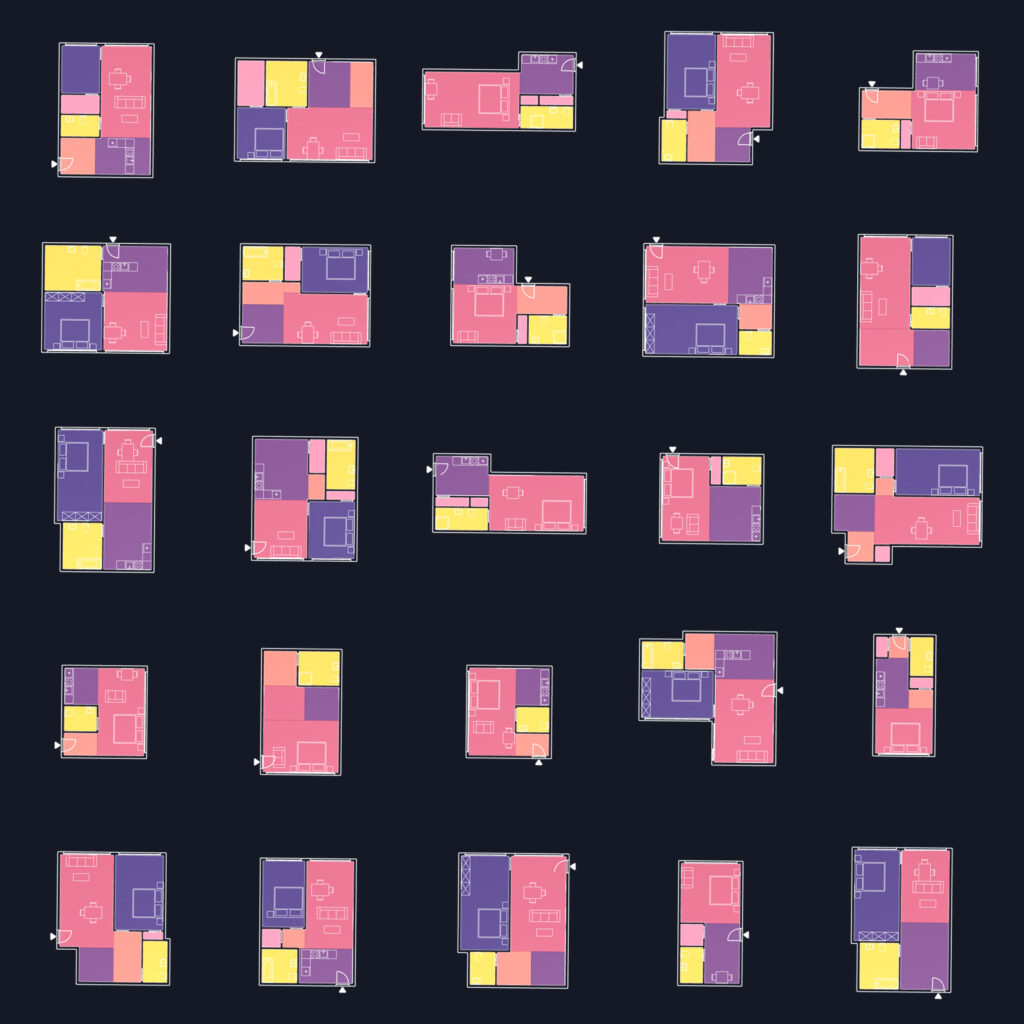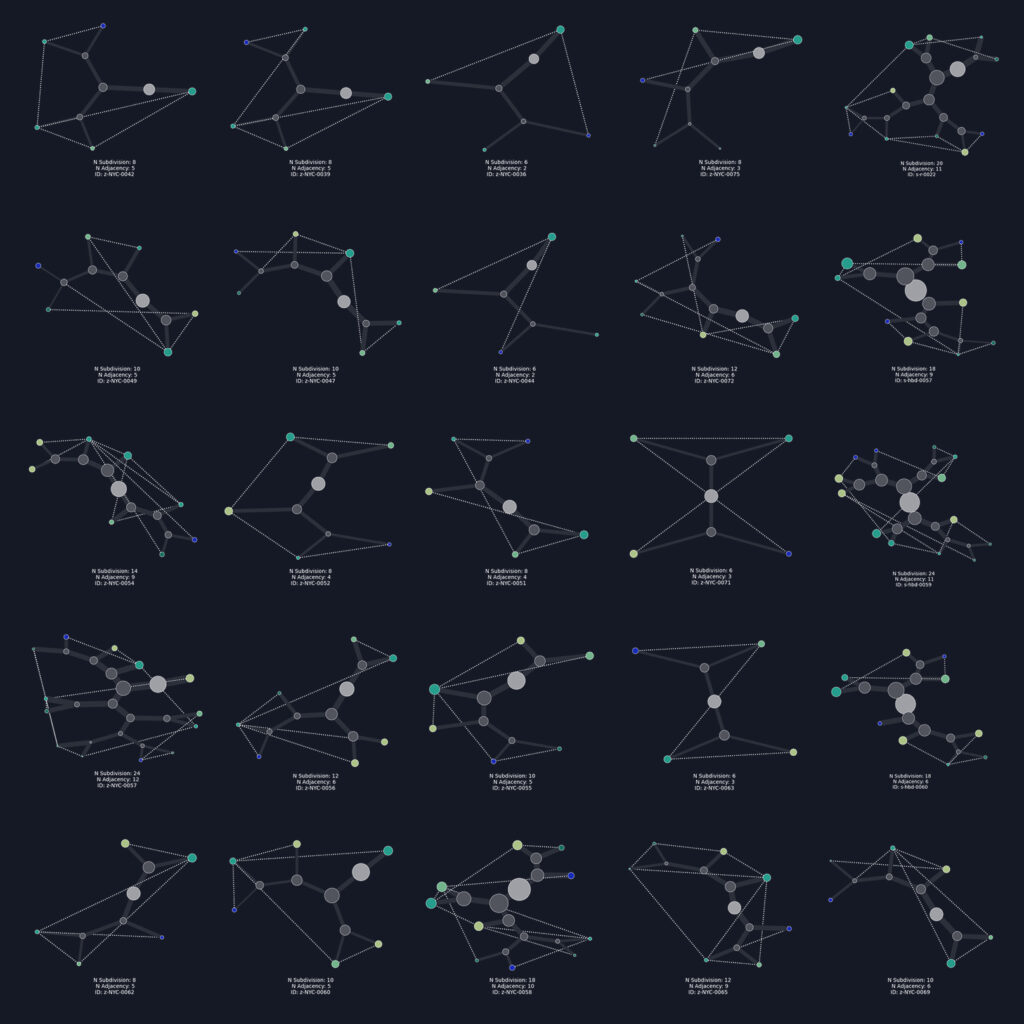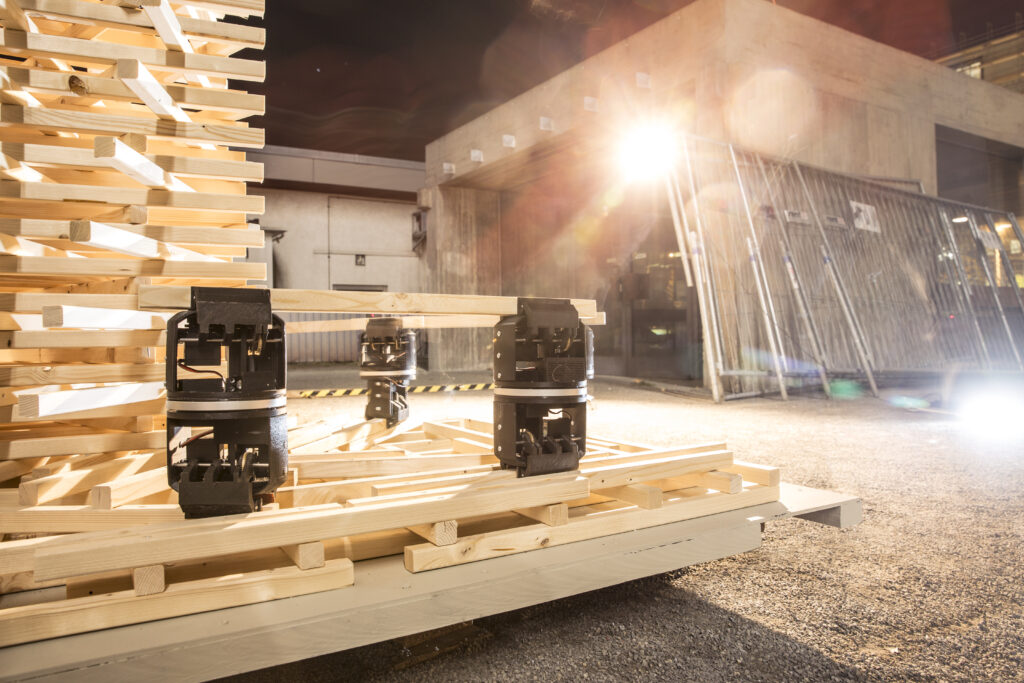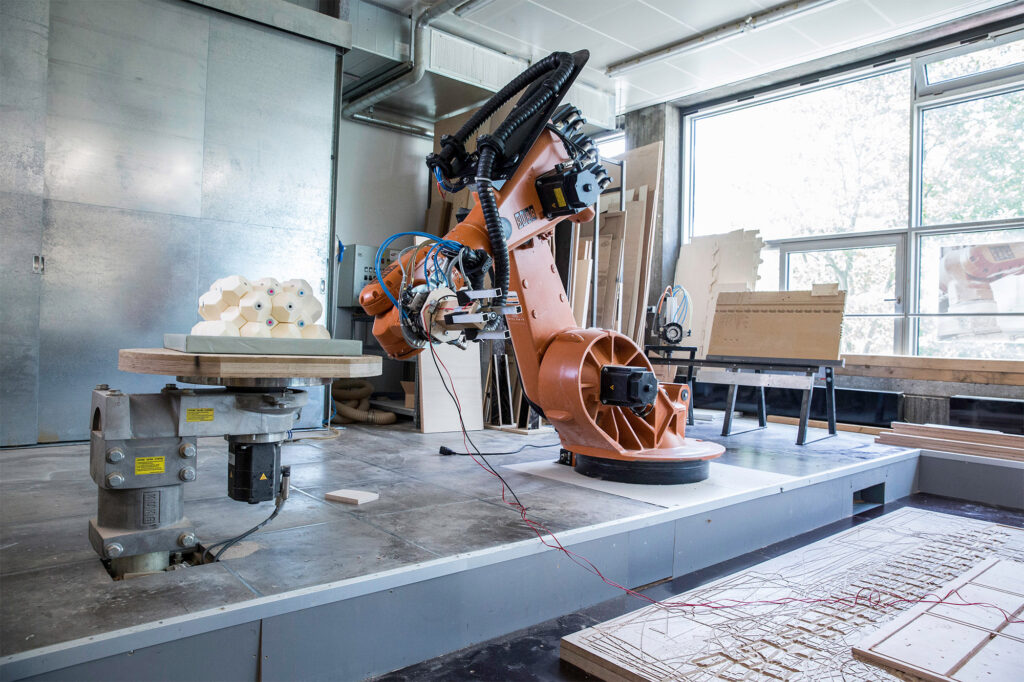


WHY?
Through novel, highly complex digitally fabricated structures as well as experimental construction systems and AI algorithms there is nothing we cannot build or imagine. With a planet at the brink of climate collapse and cities around the globe struggling to provide affordable and healthy homes for residents, we want to ask –> how and what should we build? –> How can we best leverage our digital technologies and human design intelligence towards shaping our world for the better?
IMPACT SCALES
-> computational methods -> design workflows -> components and prototypes -> buildings -> urban -> building codes -> policy
RESEARCH METHODS
-> computational geometry -> structural modeling -> building energy simulations -> data science and analytics -> architectural design
generative and ai driven architectural design
How can we create the next generation of architectural design tools to design more sustainable buildings? How can we invent new data structures and methods of representation that are specific to architecture? How can we integrate artificial intelligence into design processes? How can we augment human intuition with machine intelligence to design better buildings?
embodied carbon and sustainability in the built environment
How can we lower material use and embodied carbon for new construction? How can we use large scale building stock analysis and simulations to inform building policy and building codes? What building typologies and design decisions have the biggest impact in lowering embodied carbon in buildings? How can we create decision making frameworks that enable architects and engineers to build low-carbon buildings?

experimental digital fabrication and timber construction
How can leverage geometry and structural simulations to create building systems that use less materials? How can we create prefabricated building components that enable affordable housing? How can digital fabrication methods enable us to use existing materials in new ways? How can we envision new construction typologies for new, locally available materials such as small diameter timber?
Research Collaborators at UC Berkeley: Professor Paul Mayencourt



